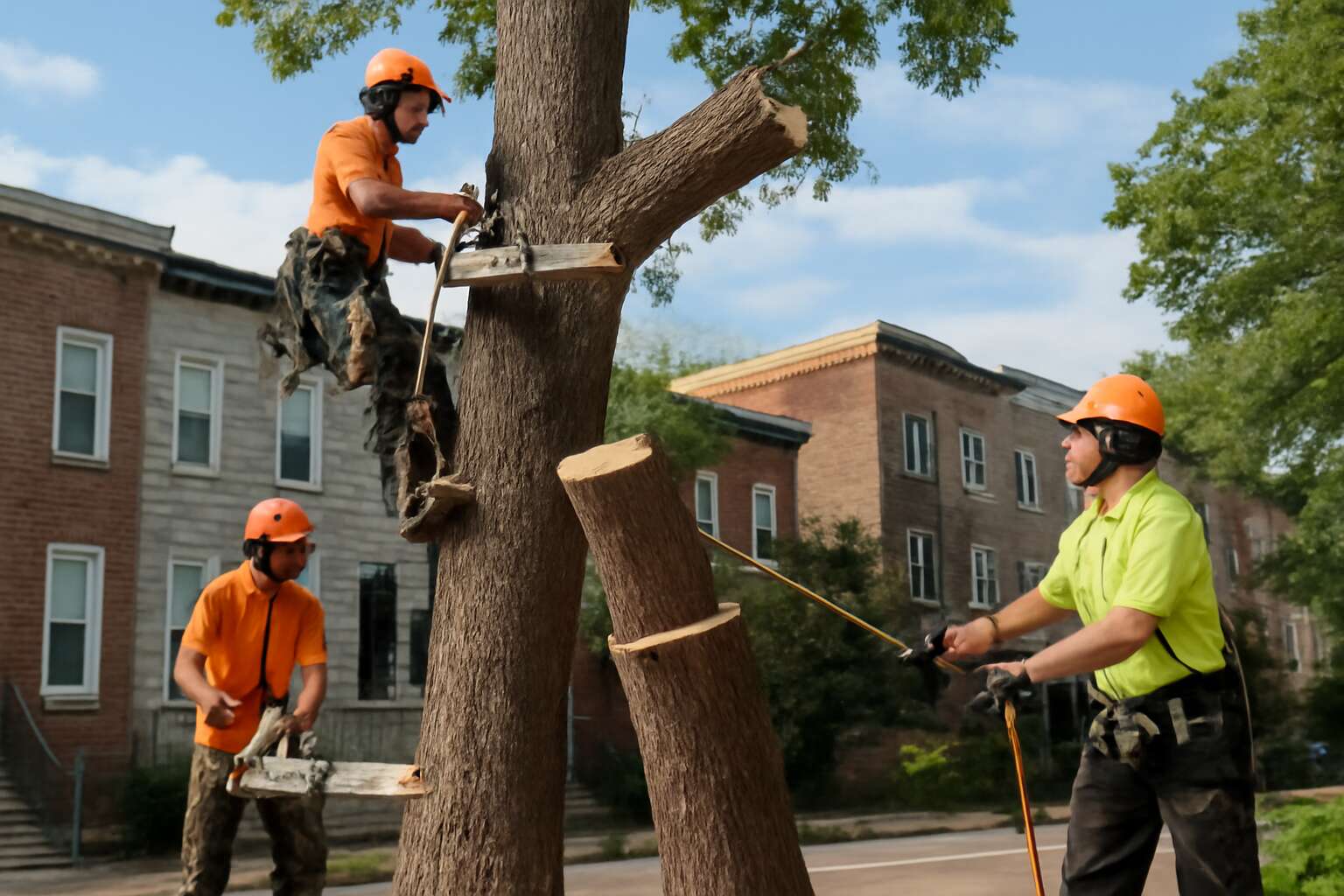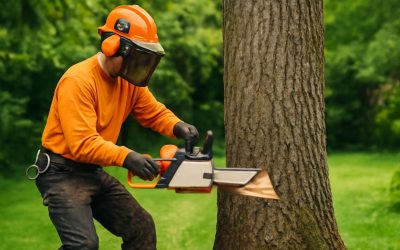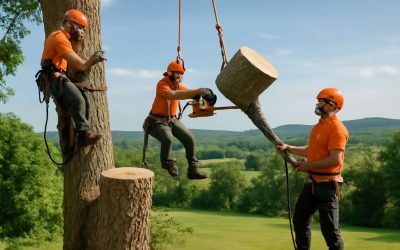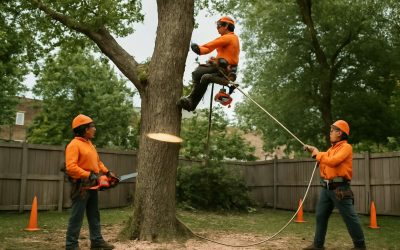Comprehensive Guide to Tree Removal Services in Baltimore
Understanding Tree Removal in Baltimore
Tree removal in Baltimore isn’t just about clearing space; it’s about safeguarding property, public safety, and the environment. In a city where mature trees often define the landscape, understanding when and why to opt for professional tree removal services becomes crucial. Whether addressing storm damage, disease, or safety hazards, knowing the nuances of tree removal in Baltimore can make all the difference.
Effective tree removal involves more than just cutting down a tree. It requires precise planning, proper equipment, and adherence to local regulations. Baltimore’s urban environment demands careful consideration of root systems, nearby structures, and ecological impact. Here are some factors often involved in the process:
- Assessing the health and stability of the tree
- Determining the safest removal method
- Ensuring environmental responsibility during disposal
Choosing the right service provider for tree removal in Baltimore means understanding these complexities and valuing professional expertise. It’s not just about removing a tree—it’s about doing it right, safely, and with respect for the city’s natural harmony. When trees threaten safety or infrastructure, timely and efficient tree removal becomes essential for Baltimore residents and businesses alike.
Reasons for Tree Removal
In a city where history and nature intertwine, the decision to pursue tree removal in Baltimore often stems from a blend of necessity and respect for the urban landscape. Statistics reveal that mature trees can live for over a century, yet sometimes their presence becomes a liability rather than an asset. When branches threaten power lines or roots compromise foundations, professional tree removal services become essential. It’s not merely about cutting down a tree; it’s about balancing safety with ecological integrity.
Reasons for tree removal in Baltimore are diverse and often complex. Storm damage, disease, and structural instability are common catalysts. Additionally, urban development and infrastructure projects sometimes require careful removal of trees that no longer serve the community’s safety or aesthetic goals. The process involves a nuanced understanding of local regulations and environmental considerations, ensuring that tree removal is conducted responsibly. By choosing the right experts in tree removal Baltimore residents can rest assured that their concerns are addressed with precision and care.
Choosing a Professional Tree Removal Company
Choosing a professional tree removal company in Baltimore is more than just selecting the first name that pops up—it’s about ensuring safety, precision, and environmental responsibility. In a city where history is etched into every corner, trusting experts who understand the subtleties of urban forestry is crucial. A reliable tree removal Baltimore service will not only handle the task efficiently but also respect local regulations and ecological considerations.
To make the right choice, consider several factors: experience, licensing, and customer reviews. An expert team will conduct a thorough assessment and employ advanced equipment to mitigate risks. When it comes to tree removal Baltimore residents can count on, professionalism is paramount. The right company will prioritize safety and leave your property pristine, all while maintaining the integrity of Baltimore’s cherished landscape.
Tree Removal Process and Techniques
Tree removal in Baltimore involves a strategic blend of safety, skill, and ecological awareness. The process begins with a comprehensive assessment of the tree’s condition, ensuring that the removal method chosen minimizes risk to nearby structures and the environment. Modern techniques employ advanced equipment such as cranes, ropes, and harnesses, allowing professionals to work efficiently even in tight urban spaces.
During the procedure, careful planning is crucial to prevent damage to surrounding landscapes and property. For example, techniques like sectional felling and cabling are often used to control the direction of the fall and reduce impact on nearby trees or buildings.
- Assessing the tree’s health and stability
- Using specialized tools and machinery
- Executing controlled felling for safety
In Baltimore, where history and urban development intertwine, skilled arborists prioritize preservation wherever possible, employing environmentally responsible methods that align with local regulations. The right approach to tree removal Baltimore residents rely on is precise, safe, and respectful of the city’s unique landscape. This ensures a seamless process that leaves your property secure and visually intact, reflecting the city’s resilient spirit and commitment to green spaces.
Cost of Tree Removal in Baltimore
In Baltimore, the cost of tree removal can vary significantly depending on several factors, from the size and species of the tree to its location and the complexity of the job. While some smaller trees may be removed for as little as $200, larger, more intricate projects can climb into the thousands. It’s essential to understand that investing in professional tree removal services in Baltimore ensures safety, efficiency, and environmental responsibility.
Typically, professional tree removal companies in Baltimore offer transparent pricing structures, often breaking down costs into elements such as equipment use, labor, and disposal fees. For example, a typical tree removal in Baltimore might include:
- Size and height of the tree
- Accessibility and proximity to structures
- Health and condition of the tree
- Additional services like stump grinding or land clearing
Knowing these factors helps residents make informed decisions, balancing budget considerations with the need for expert care. Ultimately, the right approach to tree removal in Baltimore combines safety, skill, and affordability, ensuring that your landscape remains healthy and visually appealing for years to come.
Tree Preservation Tips and Alternatives
Tree removal in Baltimore is more than just a necessity; it’s a delicate dance between nature’s resilience and human intervention. When trees threaten safety or compromise landscape aesthetics, a comprehensive approach to their removal becomes vital. This process, when executed with care and precision, preserves the integrity of your property while respecting the environment.
For those seeking alternatives to full-scale tree removal, consider options like pruning or crown thinning, which can extend the life of a tree and maintain its beauty. Preservation tips emphasize regular inspections and disease management, helping prevent the need for drastic measures. Sometimes, a well-informed decision to preserve a tree can transform a simple landscape into a living masterpiece, even in the face of urban challenges.
Ultimately, whether opting for expert tree removal baltimore or exploring preservation strategies, understanding the nuances of each choice empowers homeowners and property managers to create sustainable, lush environments. After all, every tree removed is a story of renewal—an opportunity for growth and renewal amidst the evolving Baltimore skyline.
Environmental and Local Regulations in Baltimore
In Baltimore’s sprawling urban tapestry, every tree tells a story rooted in history, resilience, and the delicate balance between growth and decay. Navigating the intricate web of environmental and local regulations surrounding tree removal in Baltimore is crucial for property owners seeking to harmonize development with nature’s rhythm. With over 200 years of history, Baltimore’s commitment to preserving its green heritage underscores the importance of understanding these laws to avoid unforeseen complications.
Environmental stewardship intertwines with local mandates, requiring permits and adherence to specific guidelines for tree removal baltimore. These regulations aim to protect the city’s lush canopies while permitting necessary interventions. For example, certain trees may be protected due to their age or species, demanding a careful assessment before any action. To streamline this process, authorities often provide a checklist of requirements, including:
- Application submission with detailed tree location and health status
- Proof of inspection by certified arborists
- Adherence to seasonal restrictions to minimize ecological disruption
Understanding these nuances transforms a potentially daunting task into a seamless process, ensuring that every decision aligns with Baltimore’s environmental ethos. Whether you’re contemplating tree removal baltimore for safety, aesthetic reasons, or urban planning, respecting these regulations paves the way for sustainable growth and renewal. The city’s rich history and vibrant skyline beckon us to protect its natural heritage while making pragmatic choices that honor both nature and development.
Preventive Measures to Minimize Tree Removal
Preventive measures are essential in reducing the need for tree removal in Baltimore. Proper maintenance, such as regular pruning and health assessments, can extend a tree’s lifespan and prevent hazards before they arise. When trees are monitored closely, it becomes easier to identify early signs of disease or structural weakness that could lead to costly tree removal baltimore down the line.
For property owners wanting to minimize tree removal, investing in professional arborist inspections is a smart move. These experts provide detailed evaluations and recommend treatments that can save trees and preserve Baltimore’s green landscape. Sometimes, simple interventions like cable bracing or root health management can make a significant difference.
- Regular pruning to remove dead or weak branches
- Soil testing to prevent root decay
- Monitoring for pests and disease
can greatly reduce the risk of needing tree removal baltimore unexpectedly.
Ultimately, proactive care not only shields your property but also supports Baltimore’s commitment to environmental sustainability. By prioritizing prevention, we can enjoy the city’s natural beauty and avoid unnecessary tree removal baltimore, ensuring the urban forest remains resilient for generations to come.




0 Comments